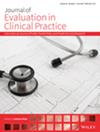Signal Detection at SFDA: A Comprehensive Analysis of Current Practices and Future Directions
Abstract
Background
The Saudi Food and Drug Authority (SFDA) plays a pivotal role in safeguarding public health through robust pharmacovigilance. Since establishing its signal detection section in 2015, SFDA has implemented a comprehensive framework to monitor and evaluate drug safety through proactive data collection, advanced analytical methods, and international collaborations.
Objective
To provide a comprehensive analysis of the current practices in signal detection at SFDA, assess the effectiveness of its regulatory framework, in-house priority system, active surveillance programme, and global collaborations, and to offer recommendations for future enhancements in pharmacovigilance.
Methods
A scientific review was conducted using publicly available literature, official SFDA guidelines, and internal reports. The evaluation focused on the regulatory mandate, data collection methodologies, signal generation processes (including weekly scanning of diverse sources), case validation, and the integration of advanced statistical techniques. Special emphasis was given to the in-house priority algorithm, active surveillance initiatives, and collaborative efforts with international bodies.
Results
The review highlights that SFDA's robust regulatory framework and innovative in-house priority algorithm have enhanced the efficiency of signal detection. The active surveillance programme has significantly increased the capacity for real-time monitoring, while global collaborations have facilitated knowledge exchange and harmonised methodologies. However, challenges persist regarding data quality, resource allocation, and the need for continuous training and improved communication among stakeholders.
Conclusion
SFDA's signal detection system effectively contributes to drug safety in Saudi Arabia by combining rigorous regulatory practices with innovative analytical methods and international cooperation. Addressing current challenges through advanced technologies, enhanced resource allocation, and strengthened stakeholder communication is recommended to further improve pharmacovigilance practices and ensure public health protection.

 求助内容:
求助内容: 应助结果提醒方式:
应助结果提醒方式:


